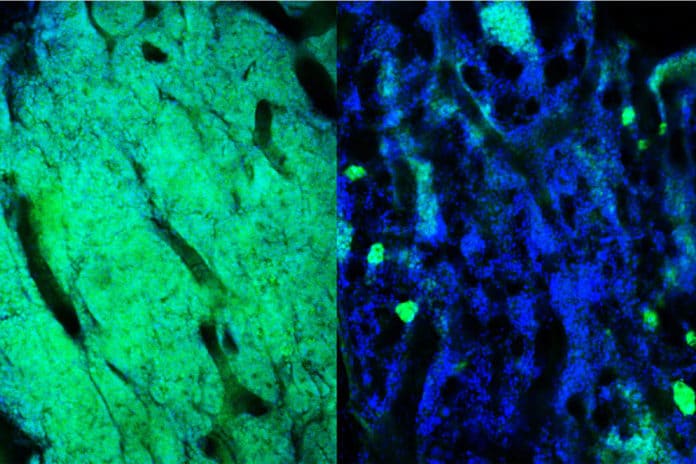Blood cancers, such as leukemia, can be effectively treated with chemotherapy, although relapse usually occurs when resistant cancer cells evade the original drug regimen.
Now, Harvard scientists have identified unique characteristics of resistant cancer cells: a temporary change in metabolism, or how they use nutrients. The study has shown that such cells have nutrients in their microenvironment, and they use them as genetic background.
Resistant cancer cells are rare, thus difficult to detect. Scientists identified the cells and tracked their progression over time, using a mouse model of acute myeloid leukemia and labeled the cells with a bioluminescent protein and a fluorescent protein.
Lead author, Nick van Gastel, said, “We studied the cells when cancer relapsed, which is normally the point that resistance is studied because it is clinically obvious. But we also isolated the cells at the point of maximal chemotherapy response, which is when you have the fewest cells left. Those are the cells that endured chemotherapy stress and can now cause a relapse.”
The study has shown that these resistant cells left after chemotherapy went through a temporary change in metabolism. In particular, they change the way of using amino acid glutamine, directing it almost exclusively to fuel nucleotide production.
Van Gastel said, “If you look too late when the relapse has occurred, these changes are no longer visible. It’s a transient stress response. If you target metabolism during that time, the cancer cells are extremely vulnerable.”
When the specialists targeted glutamine metabolism or nucleotide production for only one day, resistant cells were eliminated, and disease survival improved.
van Gastel said, “This opens a whole new set of possibilities for targeting these cells because you’re no longer just looking for drugs that can target genetic mutations, which is difficult to do. Metabolic programs are driven by enzymes, and from a chemical point of view, they are much easier to target pharmacologically using small molecules and drugs.”
Several companies are creating potential drugs that repress this metabolic pathway, although not proposed for cancer treatment. The analysts hope that an inhibitor can be repurposed and combined with chemotherapy to improve patient results.
van Gastel said, “If you give the inhibitor to patients who have undergone chemotherapy, you might not need to give them this new drug for a very long period. You can target that exact moment of metabolic change, which might avoid some of the toxicity issues associated with long term treatments.”
David Scadden, the Gerald and Darlene Jordan Professor of Medicine and professor of stem cell and regenerative biology, said, “In other types of cancer and diseases, the cells’ environment contributes to and often drives the outcome. Viewing these problems in the context of dynamic ecosystems can often lead to new approaches, but it does require moving away from the reductionist view of single genes or single cells.”
“Find a key moment or pathway in the lives of cell communities, and we might be able to make a difference. It’s a bit like the keystone in an arch: studying that one stone won’t tell you much, but consider it in terms of the time of its placement and the stones beside it, and you really see its meaning.”
Journal Reference:
- Nick van Gastel et al. Induction of a Timed Metabolic Collapse to Overcome Cancer Chemoresistance. DOI: 10.1016/j.cmet.2020.07.009
